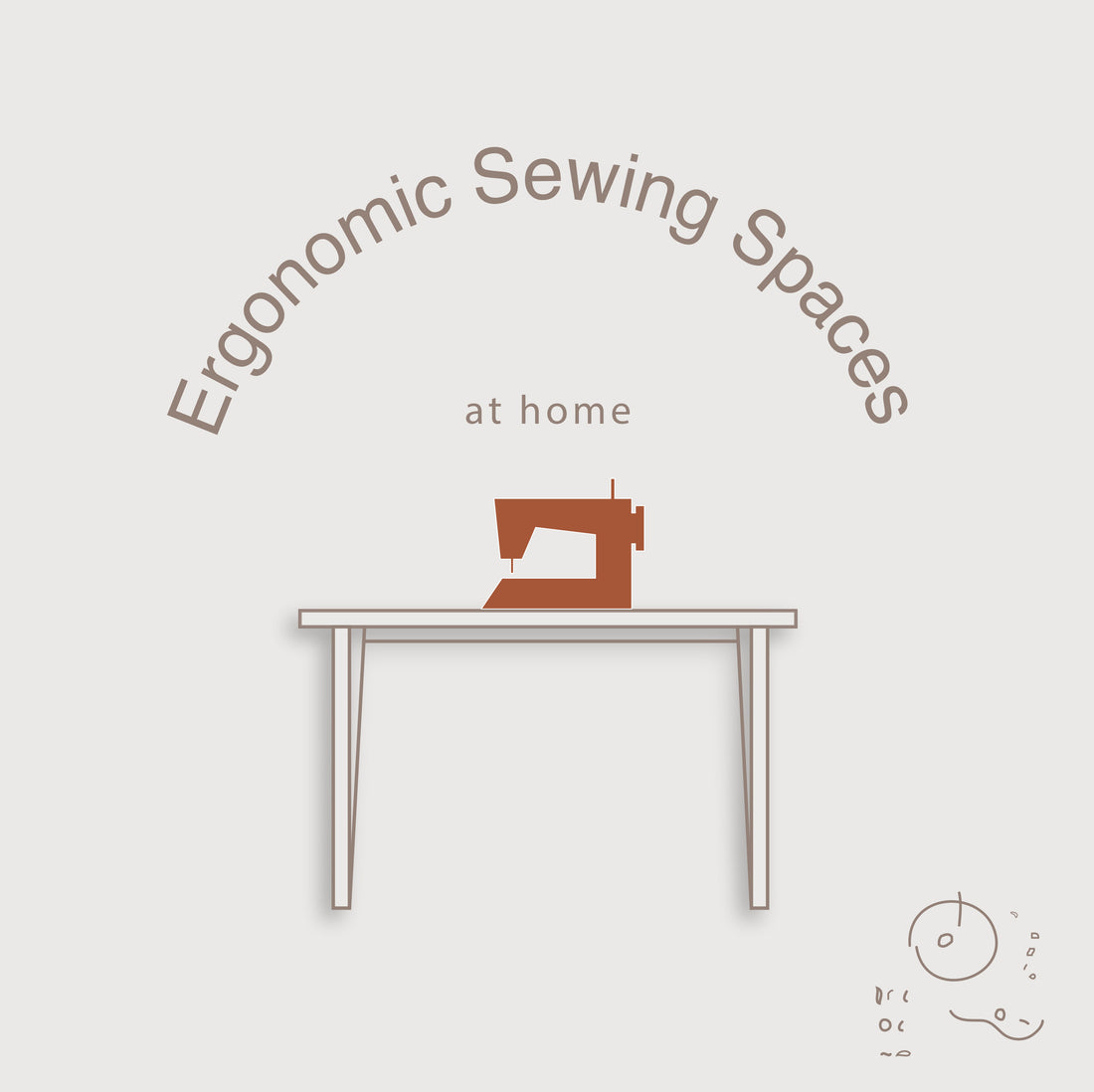Written by Alison Pollard (Interior Designer)
May 2020
Since we are all spending a lot more time at home at the moment, we are spending more time behind our sewing machines.
Some of us may have had our sewing spaces taken over for Work-From-Home life, some of us may still have a dedicated sewing room and a lot of us are sewing at our dining tables. Below are a few ways to set up your permanent or temporary sewing space so it has the best ergonomics for you. Because the more comfortable you are at your machine, the more time you can spend sewing!
YOUR CHAIR
There are endless options when it comes to the chair you sit on, and getting it right for you will make the world of difference.
Below are a few key features you should be looking out for when finding a chair (be it at a furniture shop, or shopping with what you already have at home).
Size
When sitting at your chair, your feet should be flat on the floor and your knees should be at a right angle (diagram below).
This is where height adjustable chairs are great as they can cater for a range of body heights.
Back Rest
When you are sitting for long periods of time, it is good to have a back rest. Whilst sitting on a stool may be easy to get up and down from and move between machines etc. it is not good for your back! Find a chair with a back rest, preferably one that can flex and move with you, or that can be adjusted.
Lumbar Support
Lumbar support refers to supporting your lower back. A lot of specialised office chairs will have this built in. However, if you are sitting on a dining chair or hard timber chair this probably won’t have any lumbar support as they have not been designed for you to sit in for long periods of time. You can try adding a cushion or small pillow behind your lower back to help with support (maybe you could even sew one to fit your needs!)
SITTING DESK / TABLE
Height
The optimal height of your sewing desk should be between 72cm - 75cm high (measure to the top surface of your desk).
This relates back to you sitting with your feet at a right angle. If your table is too short or too high it will push your arms and shoulders upwards and you will find that this will start to cause you pain in your upper back. If you are shopping for a new desk, take your tape measure with you or check the dimensions when shopping online. If you are searching around your house for the best table to work on, give it a test run with your chair before setting up permanently.
Stability
There is nothing worse than your sewing desk shaking when your overlocker is going at full speed! Make sure your desk is sturdy enough to take the constant movement and vibrations of your machine. If you have a desk on castor wheels, make sure that your wheels can be locked in place. If you are using a collapsable table, make sure there is enough support for the movement and weight of your machine/s.
STANDING DESK / TABLE
Height
The optimal height for a standing desk or cutting table is between 90cm - 105cm high (measure to the top surface of your desk).
If you are using your kitchen bench to work on, these have usually been designed to be 90cm high (this correlates to standard kitchen equipment sizes).
If you are standing, make sure there is enough room for your feet under your table/bench. It is not natural for the human body to stand in a perfectly straight line all day, so make sure you can maneuver around easily.
Stools
If you are sitting at your bench, make sure you have a stool that can support you. Find a stool that has a back rest and lumbar support, just like with your chair. A lot of stools also have a foot rest designed into them, if yours doesn’t you can use a smaller stool to support your feet.
